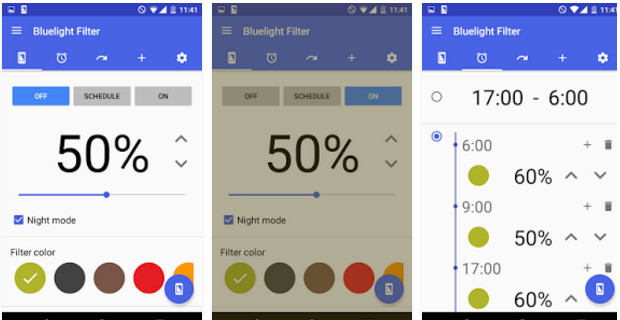The unclouded sky during the night looks gorgeous. No matter where you look, you’ll find stars everywhere. Not everything that shines in the sky is a star. The shining object might be a planet, asteroid, etc. To know the name or details of the celestial body you’re gazing at, or whether the bright shiny object in the sky is a star or a planet, you don’t have to look up information in an astronomy book. Well, the following Android and iOS apps allow users to get details of almost everything they can see with their eyes in the sky.
Best astronomy apps for iOS and Android
SkEye
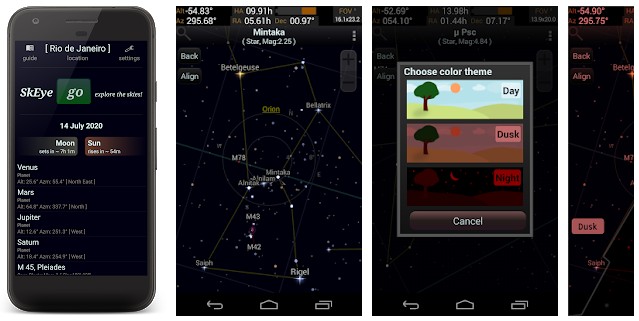
SkEye is a tiny star gazing app for Android. It requires your location details to work. When you enter your state/district, city, latitude, or longitude and tap the “Accept” button, SkEye will display a list of planets, asteroids, stars, etc, and their position in the sky. To see the direction and additional details, you must tap on the planet/star name. The SkEye astronomy app enables users to see the position of any interstellar object on a date of their choice. It shows the following details of the celestial bodies:
- Azimuth, FoV, Declination.
- Altitude, Hour Angle, right ascension values, etc.
If you have got a sophisticated telescope, you can use the above details to see the celestial body through the telescope.
Star Walk 2
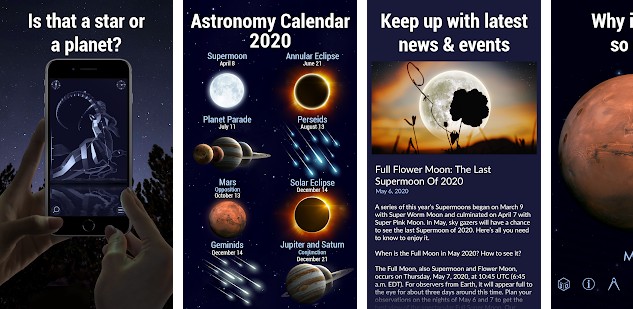
To use Star Walk2, you must let it access your location or enter your current location manually. SW2 will show stars/planets on the screen over a beautiful live background when you do so. The application will also play nice music. Star Walk2 displays the objects and their details in such a way that it doesn’t make the screen look bloated. It lets you scroll left, up, right, and down. The stargazing application features a search tool. If you tap the name of the constellation/star/planet, SW2 will show its image and allow you to see the full details (including the exact location) of the body. If the thing you’ve tapped on is a constellation, Star Walk 2 will make you aware of the number of stars in the constellation. SW2, the stargazing app for iPhone and Android, has a time machine utility. It makes users aware of the celestial bodies that will be visible in the sky at night.
NASA

NASA is an excellent app for astronomy lovers. It lets users watch incredible videos, see images captured by several satellites launched by NASA, and more. The application gives you access to its Space Exploration system data which features various interesting details of the planets. For example, if the planet is larger than the earth, the NASA app will show the size by which the planet is larger than the earth. This astronomy app for Android and iPhone enables you to see the planet from various angles. NASA is the only app with high-quality real images of constellations, planets, stars, asteroids, etc. It also features videos that explain different complex things and the status of the various upcoming/past NASA space projects.
SkySafari
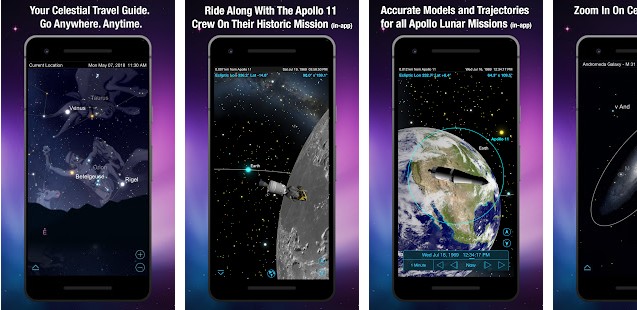
Like the above astronomy apps for Android and iPhone I’ve covered here, SkySafari uses GPS/location technology to help users identify stars, planets, etc. It also has a compass tool built-in. SkySafari consumes 4/5x more storage memory than the above applications. This is because SkySafari has a huge astronomical database. When you run SkySafari, you’ll find several dots on the screen. The background of the dots is nothing but the sky, and the dots indicate stars/constellations/planets. If you tap on the dot, SkySafari will show the details of the thing you’ve tapped. This application makes you aware of how the celestial objects look like. It also shows the sunrise and sunset time of each planet in the solar system.
SkyWiki

SkyWiki is yet another tiny and popular star identification app. It shows the following options on the screen when you run it:
- Periscope, Skymap, calendar.
- Compass, Images, News.
The Periscope utility shows the sunset and sunrise time of the 9 planets for the current day. You can see the sunrise/sunset times for the previous or coming days. The Skymap utility simulates the sky. It provides a toggle option to hide constellations, planets, the Milkyway, messier objects, etc from the Skymap. The Calendar utility covers the various important astronomical events during the day. The Images section features the “Lunar image of the day”, images shared by Nasa, Hubble telescope, etc. SkyWiki can display the exact position of a celestial body at a time you specify.
Starlight – Explore the stars
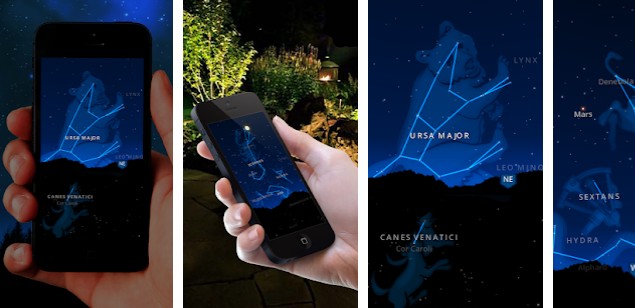
Starlight is a basic stargazing app that only shows the names of the objects. It won’t display the details of the stars, planets, etc, when you tap on them. According to developers of Starlight, this application has the names of 100k stars, 80+ constellations, etc. To find out the name of the celestial object in the sky, you should turn on the phone’s GPS. Starlight will show an image of the dark sky and various stars, planets, etc. You should move the phone in all directions and see the names until you find the one you’re looking for.

